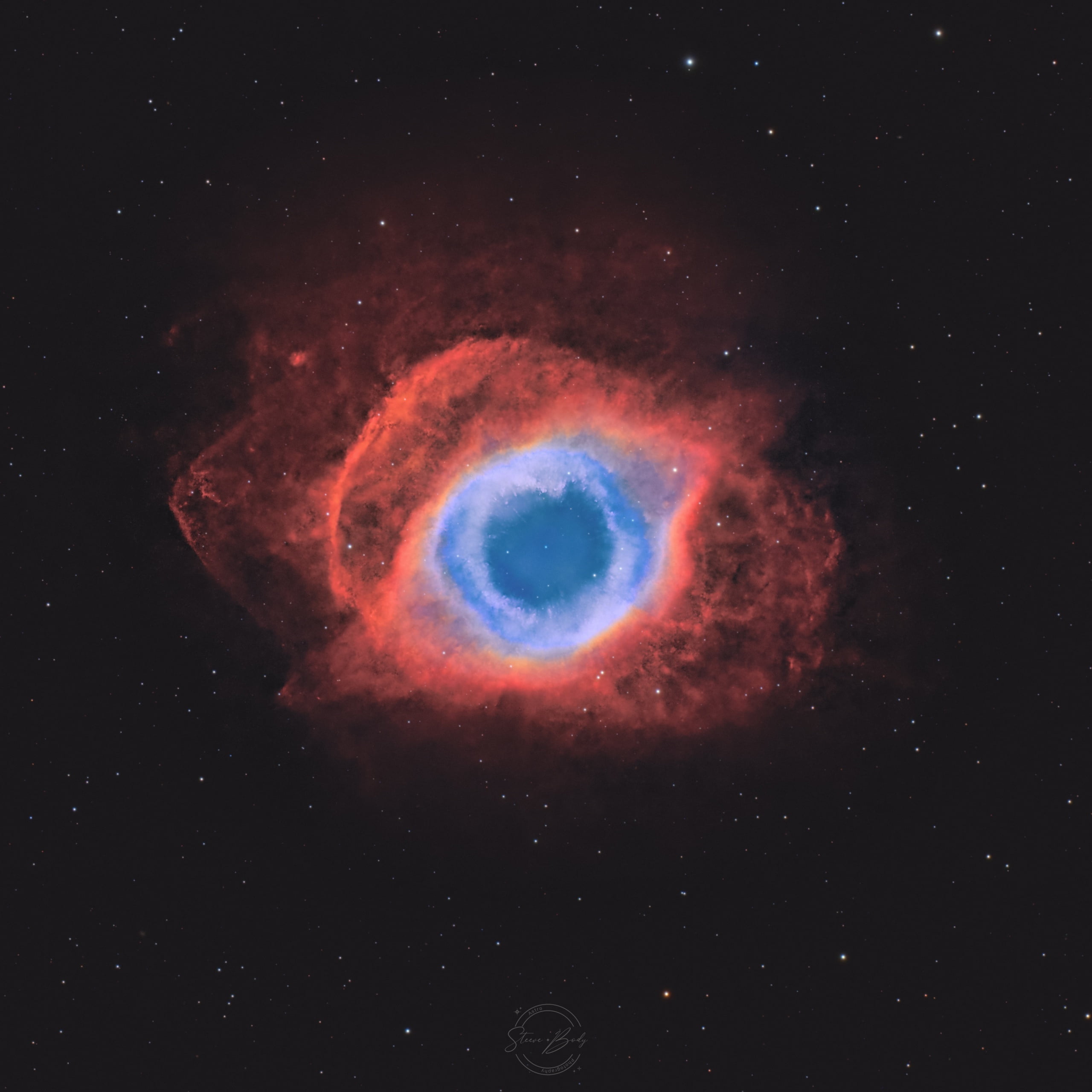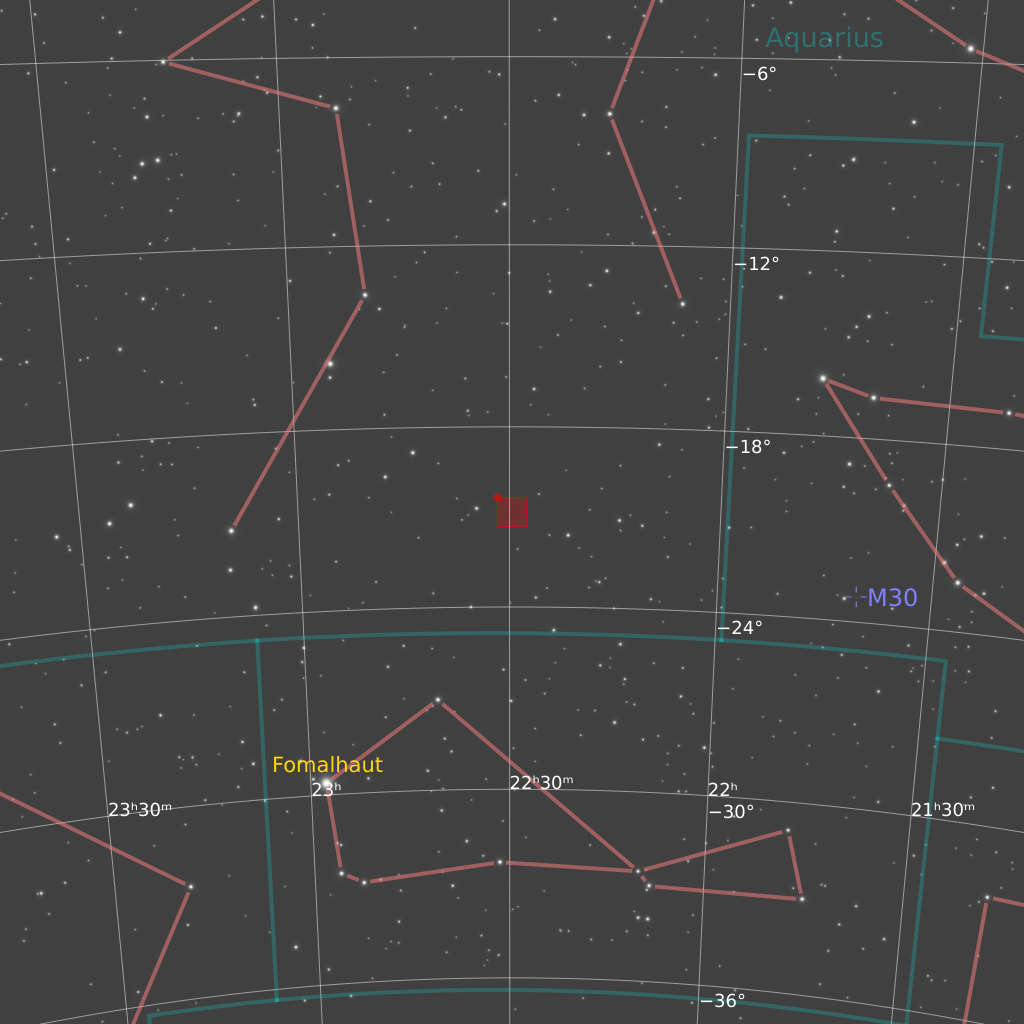Description:
Showcased in this image is the famous Helix Nebula, often dubbed the “Eye of God” due to its striking resemblance to a human eye. As a frequently photographed and immensely popular astronomical subject, the Helix Nebula presents a challenge to capture in a unique and justice-serving manner.
The Helix Nebula is a planetary nebula, a type of emission nebula characterized by an expanding shell of gas and dust, expelled by a dying star at its center. The star, in its final stages of life, ejects its outer layers, forming the nebula, while its remnant core continues to emit radiation that lights up the surrounding gas.
The unique eye-like structure of the Helix Nebula is mainly due to our perspective, as we view the nebula from the side and not from the top. The glowing central star is visible at the center, with the expelled gas forming the outer “iris,” and the darker material in the middle forming the “pupil.”
The colour palette of this image, with vibrant blues and teals against a darker backdrop, adds to the nebula’s captivating appeal. These colours are a result of the different gases in the nebula. The blues and teals often signify the presence of ionised oxygen, while other hues might indicate other elements such as hydrogen and nitrogen.
3D showcase
Featured here is a 2.5D animation study of the famous Helix Nebula. While the image of the nebula remains a 2D projection, the stars within the scene have been mapped into 3D space, achieving an immersive and dynamic visualization of this captivating astronomical object.
The stars’ real positions in space were determined using data from the Gaia mission, a project by the European Space Agency designed to chart a three-dimensional map of our galaxy. This was accomplished by plate-solving the original image and annotating it using data from the Gaia DR3 catalogue within PixInsight, a specialized astrophotography processing software. This data was then exported to a text file containing the positions of the stars within the images.
A custom Python script was utilized to read the text file, calculate each star’s distance based on its parallax, and split each star into its own layer named by the star’s distance. This data was then imported into After Effects alongside the starless image of the nebula. In After Effects, the nebula and each star were placed in their true ‘Z’ positions, forming a depth-accurate scene.
The final step involved automating a camera movement within the 3D scene, generating the breathtaking animation you see. This blend of astrophotography and animation techniques creates a stunning, dynamic portrayal of the Helix Nebula, offering a new perspective on this well-known celestial object.
Rendering this complex scene took approximately three hours, highlighting the computational intensity of accurately representing celestial bodies in animated form. This innovative approach provides a fascinating new way to experience the Helix Nebula, combining scientific accuracy with visual artistry.


